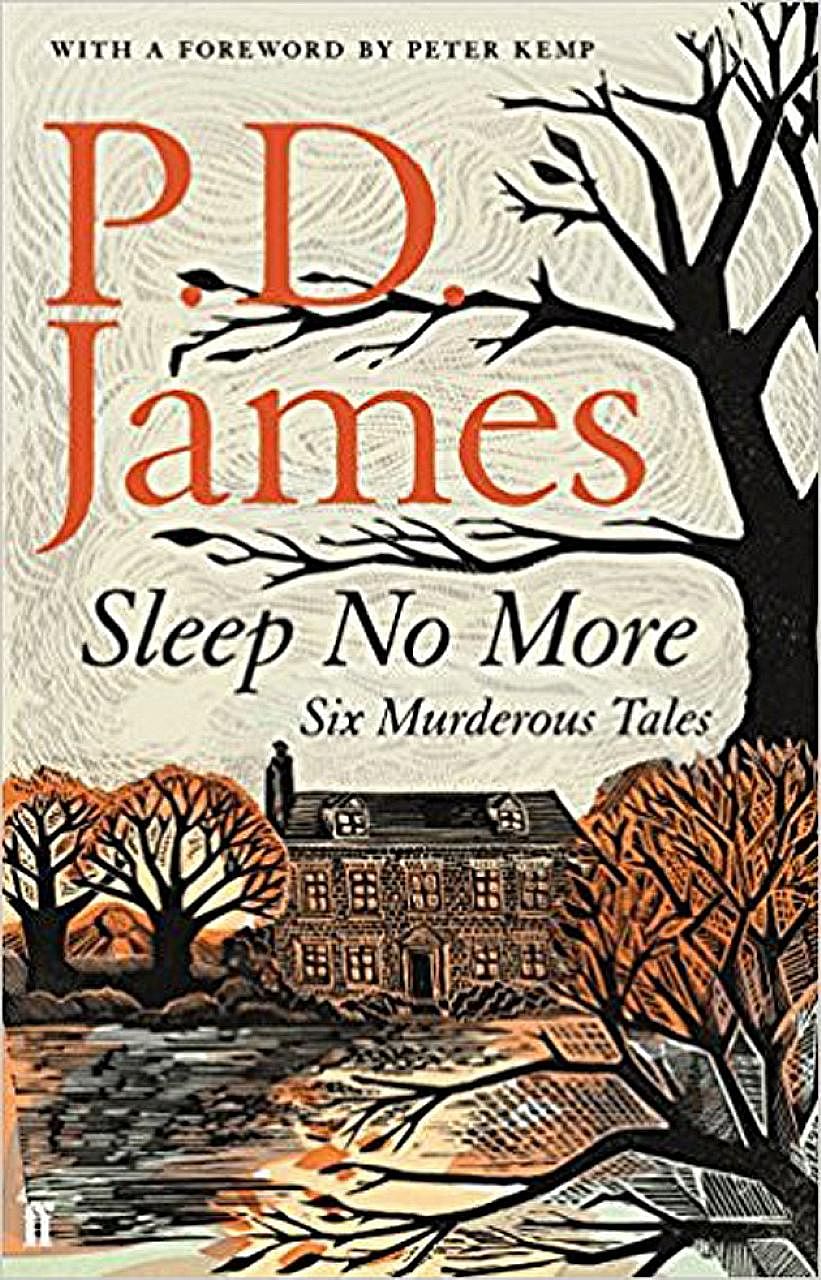FICTION
SLEEP NO MORE: SIX MURDEROUS TALES
By P.D. James
Faber & Faber/Hardcover/192 pages/ $21.40/Books Kinokuniya/ 4.5 stars
Asked at the age of 91 if crime novels always have a moral impulse, author P.D. James replies: "No, not the most violent and sadistic of the crime novels."
But the queen of crime adds that detective stories do affirm the sanctity of each individual life and the possibility of human justice.
Sleep No More brings to mind this dichotomy, even as the investigator does not necessarily take centre stage in its six murderous tales.
In the absence of protagonists such as detective Adam Dalgliesh - who features in 14 of James' novels - this short story collection reads less like the unravelling of mysteries and more like an intimate look at the minds of those who have witnessed loss of lives.
Several stories have a first-person perspective: a 73-year-old man looks back on a dark period of his prep school days; an ex-husband of a beautiful movie star ponders his downfall; and a crime fiction writer recounts his experience with murder.
The issue of morality makes fleeting appearances in the tales, more often in introspection than through the meting out of justice.
"A moralist, I suppose, would expect us both to be racked with guilt," muses one of James' characters as he looks back on a murder in which he was complicit.

But he experienced neither crippling guilt nor divine retribution.
Instead, death and the criminal inquest that followed simply taught his younger self "the insidious temptations of power, the exhilaration of feeling in control of people and events, the power of patronage".
He leads a full life, growing up to become a lawyer and, later, a judge.
Those who enjoy James' works for their grittiness and realism - adorned by poetic delivery - will savour each distinct tale in this book.
Demonstrating her mastery of the genre, James' mysteries, even in their condensed forms, offer no lack of shock, depth and intrigue.
In one case, a gentle, timid man pulls off a cleverly planned murder in a bid to win an ex-lover's affection. When he appears to succeed, he realises that he has been used as a pawn in someone else's ploy.
Grisly though her stories can be, James proves in this collection that horror is not all blood and gore either, as she explores the psyche of The Girl Who Loved Graveyards.
A sea of tombstones becomes a space providing solace to a young child, who instead regards her pet cat with revulsion. "He looked as sinister and unnatural as a furred reptile," she thinks, foreshadowing the truth behind their haunting past.
Attention to detail turns up pleasant surprises in the stories.
Almost as though it were paying tribute to the heyday of the murder mystery novel, the collection takes readers back to different points in the 1930s, weaving in motifs such as a popular toy of the time, the yo-yo.
There is wit in the brevity of James' work as well, as she allows herself a metafictional call-out alongside other celebrated names, while narrating the thoughts of second-rate detective fiction writer Charles Mickledore in The Murder Of Santa Claus.
"I'm no H.R.F. Keating, no Dick Francis, not even a P.D. James," he says. "But I do a workman-like job on the old conventions, for those who like their murders cosy, and although my amateur detective, the Hon. Martin Carstairs, has been described as a pallid copy of Peter Wimsey, at least I haven't burdened him with a monocle, or with Harriet Vane for that matter."
The "cosy" mystery, of course, is a sub-genre that James herself is known for: in which the crime and detection take place in a small, socially intimate community.
This slim volume is steeped in vivid imagery and will make for a perfect armchair read on a cool night.
Published posthumously as a collection for the first time, the stories, first printed between 1973 and 2006, are a brilliant introduction for those who are new to James' work - and a delightful gift to her long-time fans.
If you like this, read: A Spot Of Folly: Ten And A Quarter New Tales Of Murder And Mayhem by Ruth Rendell (Profile Books, 2017, $29.96, Books Kinokuniya), another collection of tales involving murder, mischief, magic and madness, from a late master of psychological suspense.


